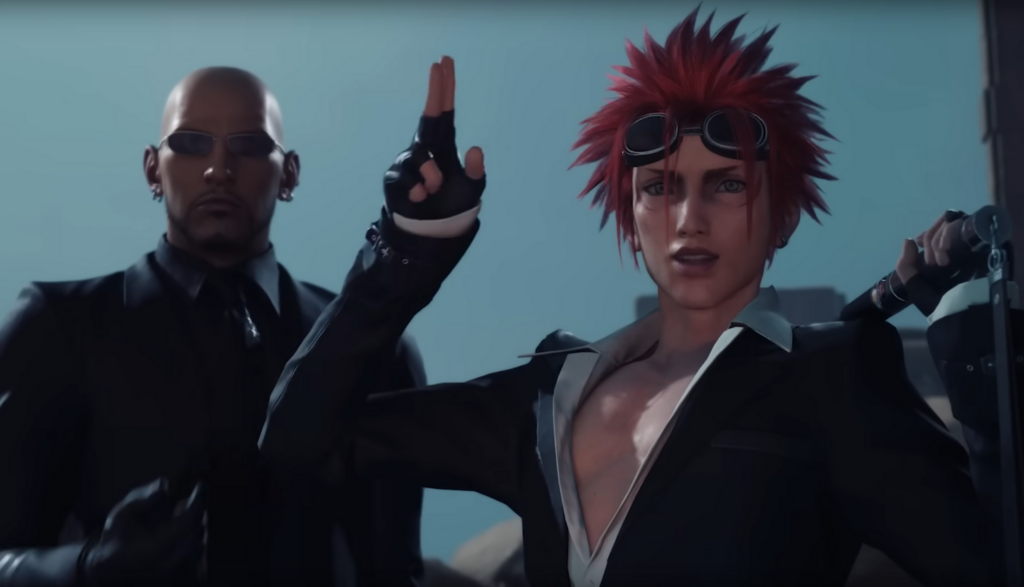
Few gaming series have as rabid a fanbase as Final Fantasy. If you’re in that group, you likely consider 1997’s Final Fantasy VII as one of the greatest games of all time.
In 2020, gamemaker Square Enix decided to begin the process of modernizing that single-player role-playing-game classic into something with real-time gameplay mechanics, some story changes and polished 3-D graphics. But instead of a single title to represent the original FF fav, they decided to create a three-game trilogy.
The 2020 installment, Final Fantasy VII Remake, covers the initial portion of the original game in the neon-lit city of Midgar, and the newly released Final Fantasy VII Rebirth picks up the embellished story from there.
What is that story? Oh, it’s a doozy. Not to mention, something rather difficult to wrap one’s brain around and explain. In a way, it’s a story about a story that already happened in some other dimension. Or perhaps its more of a multiverse tale with many different realities that are all running at the same time.
No matter how you see it, it’s clear that the game covers pivotal moments of the original narrative involving a world called The Planet; a power source called the Lifestream, that flows in and around The Planet; and a group of eclectic heroes battling against a company that’s attempting to weaponize that power source. The stakes? No less than either the salvation or the destruction of the world.
Those powered-up heroes—some who have weapons replacing missing limbs, some who have an extra boost of Lifestream in their bodies, etc.—are led by a mercenary named Cloud Strife and his childhood friend Tifa Lockhart. (Those two are an almost item.) These good guys also battle against a sorta-hero-turned-crazy-villain named Sephiroth who was given incredible power by being injected with a piece of an ancient 2,000-year-old entity that looks like a naked woman in a large glass container.
If you know nothing about Final Fantasy, then those bare-bones basics of the narrative probably don’t make much sense. But that’s the kind of dense and broadly narrated, multi-dimensional story this is.
Rebirth is a large and incredibly expansive RPG that’s divided into segmented world sections. And over the game’s 90-to-100 hours of play, gamers are called upon to explore; follow objectives; climb towers; battle monsters; talk with many characters and creatures; play through a large number of minigames (such as deck-building card games and combat-strategy simulators); cast spells; and cross swords with enemies and big bosses.
Rebirth can be played with or without an internet connection (DLCs and extra content require one). The game is single-player only, but it offers access to nine playable characters, each with their own unique playstyle (ie: Cloud’s fast-paced sword swipes, Tifa’s martial-arts fighting skills and teammate Aerith’s potent spells and character buffs.)
Final Fantasy VII Rebirth is very impressive to look at and play. The story quests are well laid out and the game mechanics are relatively easy to pick up. It’s fantasy landscapes and the hero’s sacrificial actions are highlights.
The Yu-Gi-Oh-like deck-building minigame is excellent, and could almost be a separate game all its own. Players might find some of the other minigames—such as being part of an interactive onstage play or racing Ostrich-like creatures called Chocobo—to be quite entertaining as well.
One improvement of Rebirth over its original centers on combat. Players take control of a party of characters that can be freely switched between for more expansive play. …
… That said, you’ll find quite a lot of frenetic melee and spell-casting combat in the game’s action. Explosions, gun blasts, plumes of flame, sword and staff slashes, spinning blades and impalements and screams of pain are all part of the mix. It’s not a gory spectacle, but there are splashes of blood. And characters die.
Language can get a little heated at times as well with uses of s-words, and other crudities such as “d–mit,” “a–hole,” “pr-ck” and “h—.”
We also find a bit of sensual content here, too, including some obvious sexual tension between Cloud and Tifa. The two kiss. And some female characters (including Tifa) bare midriffs and cleavage in outfits and bikinis that the camera takes time to leer at. Some characters smoke and drink, and players can go to a bar and get drunk.
The story contains plenty of spirituality, too. It’s all fantasy focused, but the game states that the spirits of the dead are what make up The Planet’s Lifestream—part of an exotic spiritual backstory that explains many of the powers, beasts and entities we meet. The central villain, Sephiroth keeps growing more powerful in an attempt to ascend to godhood.
Final Fantasy fans will likely cheer all the ways that this Rebirth updates and embellishes the story and play of the 1997 original. But younger, unfamiliar players could easily be left scratching their heads over the dense, lightly problematic, and difficult-to-follow story.

After spending more than two decades touring, directing, writing and producing for Christian theater and radio (most recently for Adventures in Odyssey, which he still contributes to), Bob joined the Plugged In staff to help us focus more heavily on video games. He is also one of our primary movie reviewers.